National
“No public events scheduled”
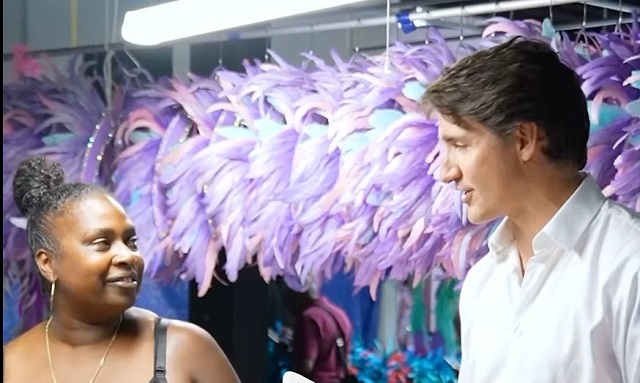
|
|
The PM is on a national campaign tour. He lies about it every day.
Here’s Justin Trudeau at the Saldenah Mas Camp in Toronto on July 18. Volunteers spend months making costumes every year for the Toronto Caribbean Festival. It’s a fantastic tradition. My father, who lived in Barbados for a while, used to drive us up from Sarnia every year for the parade.
The prime minister’s public itinerary, which is emailed daily to members of the Parliamentary Press Gallery and posted on his website, said that on July 18 he’d be in Ottawa for the Change of Command ceremony. It acknowledged no other public event.
The itinerary usually goes out around 7 p.m. each night and lists the PM’s public activities for the next day. Then on the morning of the day, we get an itinerary that either repeats the night-before email, or modifies it. On July 15 the night-before itinerary said the prime minister would be in “Southwestern Ontario” and would have “no public events scheduled” the next day, July 16.
Here’s where it gets a little weird. I never received an itinerary for July 16 that said anything else. The itinerary that went out on the morning of July 16, like the night-before email on the 15th, said “no public events scheduled.” But on the PM’s website, the itinerary that’s there now lists a meeting with Kitchener mayor Barry Vrbanovic.
Later that day, Trudeau was in Scarborough at Junior Carnival. “You could just feel the energy in the air!”, the PM tweeted.
The first I learned of the PM’s meeting with Kitchener mayor Vrbanovic was when reporters received a pool report from a CP reporter, a couple of hours after the meeting ended.
Paul Wells is a reader-supported publication. To receive new posts and support my work, consider becoming a free or paid subscriber.
Pool reports have been used in many countries for many years. If there’s not room for every reporter or photographer who might want to attend, a smaller number are designated, on the understanding that they’ll share their observations and images with everyone who couldn’t go. It’s not great, because typically the pool reporter is not permitted to ask questions.
Sometimes journalists vote to determine who among them will be the pool. Sometimes it’s a Canadian Press reporter, by tradition and convention. In all recent cases with Trudeau, it’s been a CP reporter — because no other news organization except CP has been informed of these events.
There’s also a separate broadcast pool, in which all the broadcast networks participate. That way one camera goes to pooled events, and every network gets the images and audio.
The CP reporter’s account of the Vrbanovic meeting said Vrbanovic “thanked Trudeau for his government’s programs that provide funding to municipalities.” Trudeau “said he will discuss issues that matter to the region including housing and climate change with Vrbanovic.” At this point, “The pool reporter was then asked to leave the room.” I’ll bet she was.
So here’s what I’m here to write about today. This has become standard operating procedure for Justin Trudeau and his staff during the difficult summer of 2024: they claim in public every day that the the PM has “no public events scheduled.” Even though he is in a different city every day. And he has public events scheduled. In fact, he is in the city in question so he can attend the public events he claims aren’t on his schedule.
And a small number of journalists are told, every day, “for information purposes only” — i.e., on the condition that they not tell other journalists or the public — about the public events the PM has scheduled but is lying about.
On Monday Trudeau’s itinerary said he was in “Northern Alberta” and had “no public events scheduled.” Later on Monday he was in Hinton, AB to “get a briefing on the status of the Jasper wildfire, as well as meet with the province’s premier and evacuees who fled the blaze.” I know this because it was in the CP report. “Trudeau did not speak with reporters while he was in Hinton,” the story adds.
I wrote about this on Notes, Substack’s fun short-form social-media platform. A reader responded (and here I paraphrase) that, well, maybe the PM wanted to do serious business in a crisis situation without having to dodge snarky questions from rude reporters. And, you know what? Fair enough.
Thank you for reading Paul Wells. This post is public so feel free to share it.
Share
But here’s the thing. I’ve covered a lot of political leaders in emergency settings. It’s perfectly routine for the advisory to say what a leader will do today, but to say a given event is “Closed to Media.” Or for reporters to be sequestered in a room, well away from the meeting between PM and premier, with time for questions only after the meeting ends.
What’s rarer — what I’d never actually seen before — is for a PM to fly to Alberta, for his staff to say he’s going to be in Alberta, but for them to claim he won’t be doing anything while he’s there.
Incidentally, the version of the PM’s itinerary for Monday that’s on his website now says he had a meeting with Danielle Smith and with emergency responders. This version was never sent to reporters, either before or after the meeting. Absurdly, the itinerary has also been corrected to put Hinton in “Central Alberta” instead of “Northern Alberta.”
A colleague at a large news organization who’s vocationally preoccupied with following politicians’ schedules tells me this has happened “multiple times” in recent weeks: the itinerary on the website gets updated after the fact, in ways that do not reflect what reporters were told in real time. This is the smallest possible routine coverup, for the smallest possible benefit, that I have ever seen.
Pretty soon, news organizations are going to have to start explaining why Justin Trudeau’s summer schedule is so surprising to us.
Here’s Justin Trudeau making a “surprise appearance” at Vancouver Pride on Sunday. Here’s the PM making a “surprise appearance” at Winnipeg’s Filipino Folklorama pavilion on Monday. I’m here to tell you, reporters were not informed of either event — except the ones who were given a quiet heads-up so there’d be cameras on hand. Although how can you be expected to believe me? The PM’s gaslighting website says he “will attend” Pride on Sunday. At least they haven’t rigged the Monday advisory so it retroactively lies about having told us he’d be at the Winnipeg event.
I suspect today’s post will create some buzz, so I want to be careful to say precisely what I mean to say. Politicians are under no obligation to tell anybody how they spend every minute of their day. (It’s worth noting, however, that the public agendas of leaders in other places are sometimes more detailed than in Ottawa: here’s Emmanuel Macron’s and Joe Biden’s agendas for today. The UK’s Keir Starmer seems less forthcoming.) And it’s routine for leaders’ teams to acknowledge calendar events while also emphasizing that the public and journalists can’t attend. What’s an innovation is this business of claiming the PM has nothing “public” on his schedule when he is, in fact, on tour to do public events for which he will seek tightly controlled media and social-media credit.
It’s become entertaining to learn, after the fact, what the hell has been going on. Last week the PM was on vacation in British Columbia. We receive daily itineraries during a vacation, with no public events scheduled, and I don’t begrudge anyone any vacation time. Then he was back in Ottawa for two days, and then he was back in the “Lower Mainland” of BC with “no public events scheduled.” That was Pride, as it turned out. I’m pretty sure that when the big guy was on an airplane for the second time in as many days, he knew why. Eventually so did we.
Since I’ve started making a fuss about this stuff on Notes, I think the PMO is starting to get nervous. Here’s the itinerary we were sent for today, Tuesday, at 7:03 a.m. EDT:
And here’s the updated itinerary we received at 2:33 p.m.
Thanks for the update! Unfortunately, every event in the updated itinerary occurred before the PMO sent it out. When covering your tracks, try not to be so terrible at it. Fortunately the pool report should be landing in my inbox any minute.
I asked Andrea Baillie, the Editor-in-Chief of the Canadian Press, for an explanation of the national newsgathering cooperative’s role in these activities. She replied:
“It’s long been part of CP’s mandate to be with prime ministers as they carry out their duties. Alongside major broadcasters, we provide ‘pool coverage.’ That means we gather details on what the PM said and did on behalf of all press gallery journalists, at events where there is limited space. Typically, the PMO provides embargoed information (i.e. times and locations) on the PM’s schedule on short notice so we can get there on time. The pool is bound by an agreement to use this information for planning purposes only until the events take place, at which point the CP reporter provides details on what they saw and heard in a note sent to all press gallery journalists.”
I want to be clear that I intend no criticism of CP, which has come in for some cheap shots from Pierre Poilievre and others. Reporters who are told of politicians’ activities ahead of time routinely keep this information to themselves, as I have done for politicians from many parties. Including, come to think of it, while covering elections in other countries. It’s the only way to reconcile coverage of an event with politicians’ preference for planning in secrecy. In particular, readers who are quick to dream up heroic scenarios for reporters to act as their proxy to sabotage politicians’ schemes — You should just refuse to cover it! You should just shout your questions until they’re forced to answer! — are typically less thrilled when reporters try that stuff against the politicians they like better.
But reporters are obviously getting played here. When the prime minister of Canada deploys half-way across the country, with his staff photographer and videographers; and then tells hundreds of journalists he’s got nothing planned for the next day or the day dawning; and smaller numbers of journalists already know that’s not true; and then the PM meets public officials or crowds of voters, speaks on public-policy issues, and sends out his own shop’s versions of those conversations and professionally curated images; and then (I can’t believe I’m writing this part) his staff sneaks into the website to cover their tracks ex post facto — well, this is a lake of bullshit so deep I can’t touch bottom, and at the very least, we should let you know it’s going on.
Now watch the commenters under this post line up, like iron filings in a magnetic field, to reveal their polarity.
People who hope the Liberals will win will be furious at me for nitpicking. THIS MAN IS DOING THE BUSINESS OF THE COUNTRY AND YOU JUST WANT TO TEAR HIM DOWN, they’ll say. YOU’RE NO BETTER THAN BOB FIFE. HE’S SMART TO KEEP YOU AWAY FROM SERIOUS WORK.
The ones who wanted him gone years ago will say, AH-HA. THE MAINSTREAM MEDIA IS PLOTTING WITH LIBERALS TO HIDE THE SATANIC PM. YOU HOWLED WHEN POILIEVRE DID FAR LESS, BUT NOW YOU’RE PLOTTING! PLOTTING! WITH YOUR LIBERAL PAYMASTERS.
What’s much rarer will be voters who would actively prefer, say, a Liberal government that doesn’t routinely lie about what its PM is doing. Let me tell you, I sure notice every time a supporter of the Liberals who claims to support the Liberals because they like honest reporting and evidence-based policy suddenly complains about the reporting and evidence that make their guy look bad.
As for Poilievre, I’ve written about his media manipulation at length and, I suspect, will again. These attitudes — good coverage good, bad coverage wicked and worth any artifice to avoid — are widespread and party-agnostic. But it’s worth pointing out that Poilievre now routinely sends out advance notice of his rallies, and has lately been setting aside a few minutes for brief sessions with individual reporters after such events. This one with a Sudbury reporter was chippy but informative; this one with The Gazette’s Aaron Derfel caught Poilievre in a relatively introspective mood.
Mostly I’m not surprised when any public figure avoids scrutiny. Journalistic scrutiny is so rare these days, for reasons I’ve written about at length, that nobody should be surprised when it draws an annoyed and defensive reaction from politicians who view any surprise as an attack. Or, indeed, from anybody at all. “Freedom of the press” loses friends quickly in almost any concrete case.
But again, I’ve never seen this before, a Prime Minister of Canada who demands that his staff enable him as he claims to be taking the summer off even as he’s campaigning for re-election. One more irony: If you’re paying half the salary of most Canadian journalists, even while you’re sending emails to them full of lies about your schedule, you’ve made destroying their credibility a very expensive object of government policy.
Finally, what does all this tell us about the year Justin Trudeau’s having?
I’m not Catholic, but I view this extended fibbing campaign as a venial rather than a mortal sin. It’s mostly kind of baffling.
But it has precedent. In his memoir, Trudeau recollects the times he introduced himself as “Jason Tremblay” or as “Justin St-Clair” as a student or a young adult, to avoid being judged before he could make his case. He learned early how much of himself he wanted others to see.
What’s harder to discern is the point of the artifice. Trudeau gave an extended interview to the CBC days before the disastrous Toronto—St. Paul’s byelection. Within days after the returns from St. Paul’s were in, he adopted this duck-and-cover routine. To what end? Does he seriously hope to pick up 15 points of polling deficit by pushing out Instagram photos of parade floats? Does he think he can keep this up for a year until an election?
While we wait to find out, if I were on the PM’s communications staff and I had pre-existing plans to be working somewhere else in a year, this would be an excellent week to resign, because this week you’d get to do it on principle.
I hear the PM will be in St. John’s tomorrow. Tonight we’ll see whether it’s on the itinerary. For the full experience, subscribe to Paul Wells.
For the full experience, subscribe to Paul Wells.
Alberta
COWBOY UP! Pierre Poilievre Promises to Fight for Oil and Gas, a Stronger Military and the Interests of Western Canada
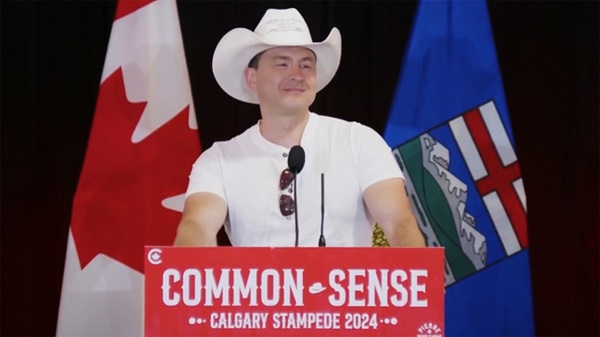
Fr0m Energy Now
As Calgarians take a break from the incessant news of tariff threat deadlines and global economic challenges to celebrate the annual Stampede, Conservative party leader Pierre Poilievre gave them even more to celebrate.
Poilievre returned to Calgary, his hometown, to outline his plan to amplify the legitimate demands of Western Canada and not only fight for oil and gas, but also fight for the interests of farmers, for low taxes, for decentralization, a stronger military and a smaller federal government.
Speaking at the annual Conservative party BBQ at Heritage Park in Calgary (a place Poilievre often visited on school trips growing up), he was reminded of the challenges his family experienced during the years when Trudeau senior was Prime Minister and the disastrous effect of his economic policies.
“I was born in ’79,” Poilievre said. “and only a few years later, Pierre Elliott Trudeau would attack our province with the National Energy Program. There are still a few that remember it. At the same time, he hammered the entire country with money printing deficits that gave us the worst inflation and interest rates in our history. Our family actually lost our home, and we had to scrimp and save and get help from extended family in order to get our little place in Shaughnessy, which my mother still lives in.”
This very personal story resonated with many in the crowd who are now experiencing an affordability crisis that leaves families struggling and young adults unable to afford their first house or condo. Poilievre said that the experience was a powerful motivator for his entry into politics. He wasted no time in proposing a solution – build alliances with other provinces with mutual interests, and he emphasized the importance of advocating for provincial needs.
“Let’s build an alliance with British Columbians who want to ship liquefied natural gas out of the Pacific Coast to Asia, and with Saskatchewanians, Newfoundlanders and Labradorians who want to develop their oil and gas and aren’t interested in having anyone in Ottawa cap how much they can produce. Let’s build alliances with Manitobans who want to ship oil in the port of Churchill… with Quebec and other provinces that want to decentralize our country and get Ottawa out of our business so that provinces and people can make their own decisions.”
Poilievre heavily criticized the federal government’s spending and policies of the last decade, including the increase in government costs, and he highlighted the negative impact of those policies on economic stability and warned of the dangers of high inflation and debt. He advocated strongly for a free-market economy, advocating for less government intervention, where businesses compete to impress customers rather than impress politicians. He also addressed the decade-long practice of blocking and then subsidizing certain industries. Poilievre referred to a famous quote from Ronald Reagan as the modus operandi of the current federal regime.
“The Government’s view of the economy could be summed up in a few short phrases. If anything moves, tax it. If it keeps moving, regulate it. And if it stops moving, subsidize it.”
The practice of blocking and then subsidizing is merely a ploy to grab power, according to Poilievre, making industry far too reliant on government control.
“By blocking you from doing something and then making you ask the government to help you do it, it makes you reliant. It puts them at the center of all power, and that is their mission…a full government takeover of our economy. There’s a core difference between an economy controlled by the government and one controlled by the free market. Businesses have to clamour to please politicians and bureaucrats. In a free market (which we favour), businesses clamour to impress customers. The idea is to put people in charge of their economic lives by letting them have free exchange of work for wages, product for payment and investment for interest.”
Poilievre also said he plans to oppose any ban on gas-powered vehicles, saying, “You should be in the driver’s seat and have the freedom to decide.” This is in reference to the Trudeau-era plan to ban the sale of gas-powered cars by 2035, which the Carney government has said they have no intention to change, even though automakers are indicating that the targets cannot be met. He also intends to oppose the Industrial Carbon tax, Bill C-69 the Impact Assessment Act, Bill C-48 the Oil tanker ban, the proposed emissions cap which will cap energy production, as well as the single-use plastics ban and Bill C-11, also known as the Online Streaming Act and the proposed “Online Harms Act,” also known as Bill C-63. Poilievre closed with rallying thoughts that had a distinctive Western flavour.
“Fighting for these values is never easy. Change, as we’ve seen, is not easy. Nothing worth doing is easy… Making Alberta was hard. Making Canada, the country we love, was even harder. But we don’t back down, and we don’t run away. When things get hard, we dust ourselves off, we get back in the saddle, and we gallop forward to the fight.”
Cowboy up, Mr. Poilievre.
Maureen McCall is an energy professional who writes on issues affecting the energy industry.
Business
Carney’s new agenda faces old Canadian problems
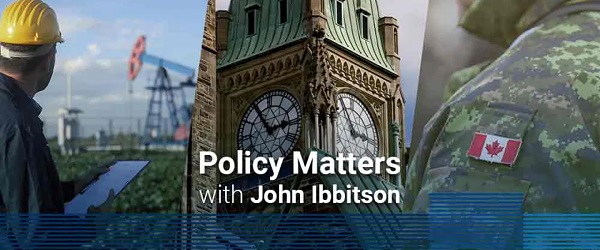
From the Fraser Institute
In his June speech announcing a major buildup of Canada’s military, Prime Minister Mark Carney repeated his belief that this country faces a “hinge moment” of the sort the allied countries confronted after the Second World War.
A better comparison might be with the beginning of the war itself.
Then, the Allies found themselves at war with an autocratic state bent on their defeat and possible destruction. Now, Carney faces an antagonistic American president bent on annexing Canada through economic warfare.
Then, Canada rose to the challenge, creating the world’s third-largest navy and landing an army at Normandy on D-Day. Now, Carney has announced the most aggressive reorienting of Canada’s economic, foreign and defence policies in generations.
Polls show strong support among Canadians for this new agenda. But the old Canada is still there. It will fight back. It may yet win.
The situation certainly would have been more encouraging had Carney not inherited Justin Trudeau’s legacy of severe economic and environmental restrictions—picking economic winners and losers rather than letting the market decide—and chronic deficits. The new prime minister would do well to dismantle as much of that legacy as he can.
Some advocate a return to the more laissez-faire approach of Stephen Harper’s government. But Harper didn’t confront a belligerent president hoping to annex Canada through the “economic force” of tariff walls.
The prime minister succeeded in getting Bill C-5, which is intended to weaken at least some of the restrictions on resource development and infrastructure, passed into law. He and the premiers pledge to finally dismantle generations of internal trade and labour mobility barriers. If we must trade less with the Americans, we can at least learn to trade with ourselves.
And the prime minister deserves high praise for reversing decades of military decline through increased spending and efforts to improve procurement. If Carney accomplishes nothing more than restoring Canada’s defences, especially in the Arctic, he will be well remembered.
That said, major challenges confront the Carney agenda.
There’s much talk about a new national energy corridor. But what does that mean? One KPMG executive defined it as a “dedicated, streamlined pathway for the energy, electricity, decarbonization, transportation and digital infrastructure.”
Yes, but what does that mean?
Whatever it means, some First Nations will oppose it tooth-and-nail. Not all of them, mind you. The First Nations Major Project Coalition is dedicated to assisting First Nations in working with government and the private sector for the benefit of all. But many First Nations people consider resource development further exploitation of their ancestral lands by a colonizing power. At the first major proposal to which they do not buy in, they will take the government to court.
What investor will be willing to commit to a project that could be blocked for years as First Nations and Ottawa fight it out all the way to the Supreme Court?
The prime minister, formerly a fervent advocate of combatting climate change, now talks about developing “conventional energy,” which means oil and gas pipelines. But environmental activists will fiercely oppose those pipelines.
There is so much that could go wrong. Sweep away those internal trade barriers? Some premiers will resist. Accelerate housing development? Some mayors will resist. Expand exports to Europe and Asia? Some businesses and entrepreneurs will say it’s not worth the risk.
As for the massive increase in defence spending, where will the money come from? What will be next year’s deficit? What will be the deficit’s impact on inflation, interest rates and sovereign creditworthiness? The obstacles are high enough to make anyone wonder how much, if any, of the government’s platform will be realized. But other factors are at work as well, factors that were also present in 1939.
To execute his mandate, Carney is surrounding himself with what, back in the Second World War, were called “dollar a year men”—executives who came to Ottawa from the private sector to mobilize the economy for wartime.
In Carney’s case he has brought in Marc-André Blanchard as chief of staff and Michael Sabia as clerk of the privy council. Both are highly experienced in government and the private sector. Both are taking very large pay cuts because, presumably, they understand the gravity of the times and believe in the prime minister’s plans.
Most important, Carney’s agenda has broad support from a public that fears for the country’s future and will have little patience toward any group seeking to block the prime minister’s agenda.
Millions of Canadians want this government’s reform efforts to succeed. Those who would put it at risk of failing will have to contend with public anger. That gives Carney a shot at making real change.
-
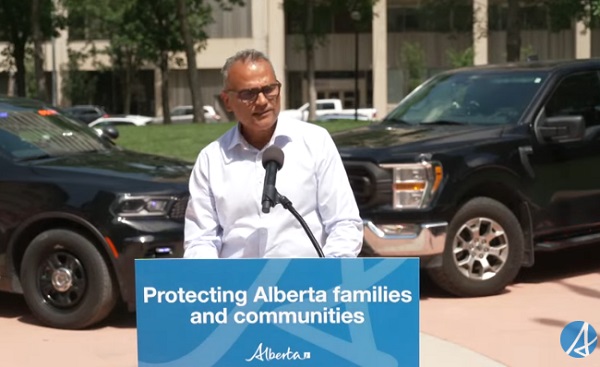
 Alberta2 days ago
Alberta2 days agoAlberta Provincial Police – New chief of Independent Agency Police Service
-
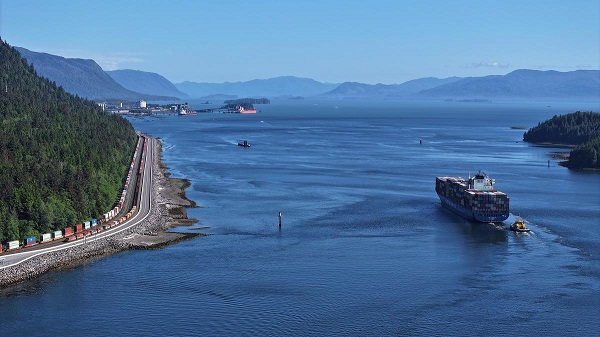
 Business2 days ago
Business2 days agoWhy it’s time to repeal the oil tanker ban on B.C.’s north coast
-
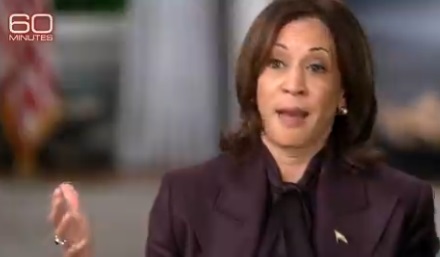
 International2 days ago
International2 days agoCBS settles with Trump over doctored 60 Minutes Harris interview
-
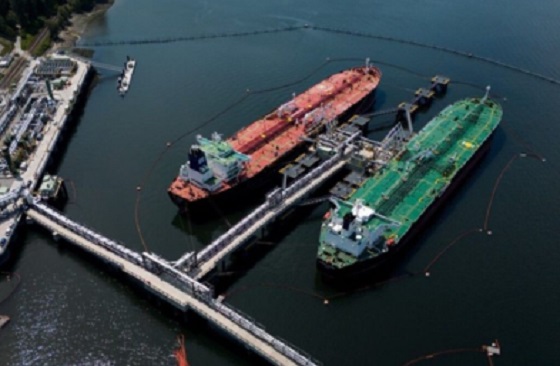
 Energy2 days ago
Energy2 days agoIf Canada Wants to be the World’s Energy Partner, We Need to Act Like It
-
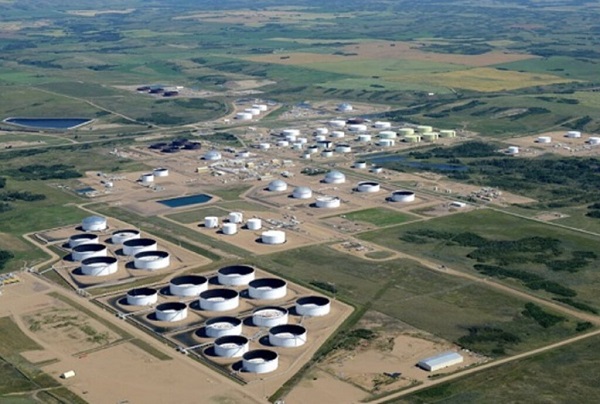
 Alberta2 days ago
Alberta2 days agoPierre Poilievre – Per Capita, Hardisty, Alberta Is the Most Important Little Town In Canada
-
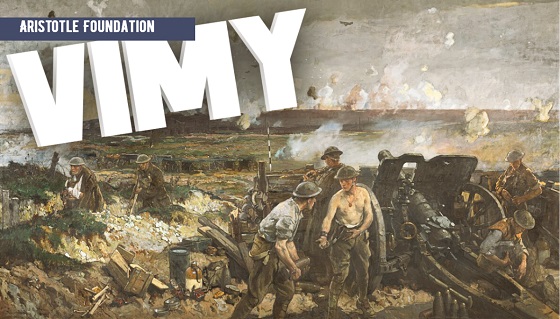
 Aristotle Foundation2 days ago
Aristotle Foundation2 days agoHow Vimy Ridge Shaped Canada
-

 Alberta1 day ago
Alberta1 day agoAlberta uncorks new rules for liquor and cannabis
-
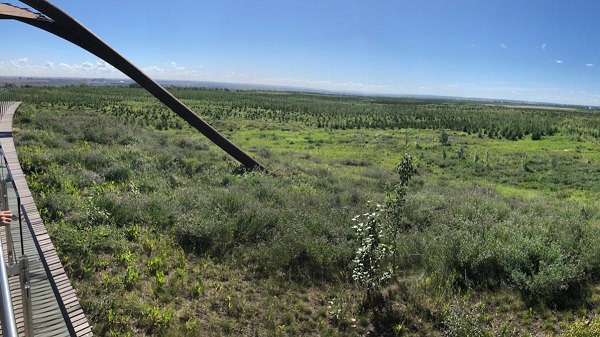
 Canadian Energy Centre1 day ago
Canadian Energy Centre1 day agoAlberta oil sands legacy tailings down 40 per cent since 2015










